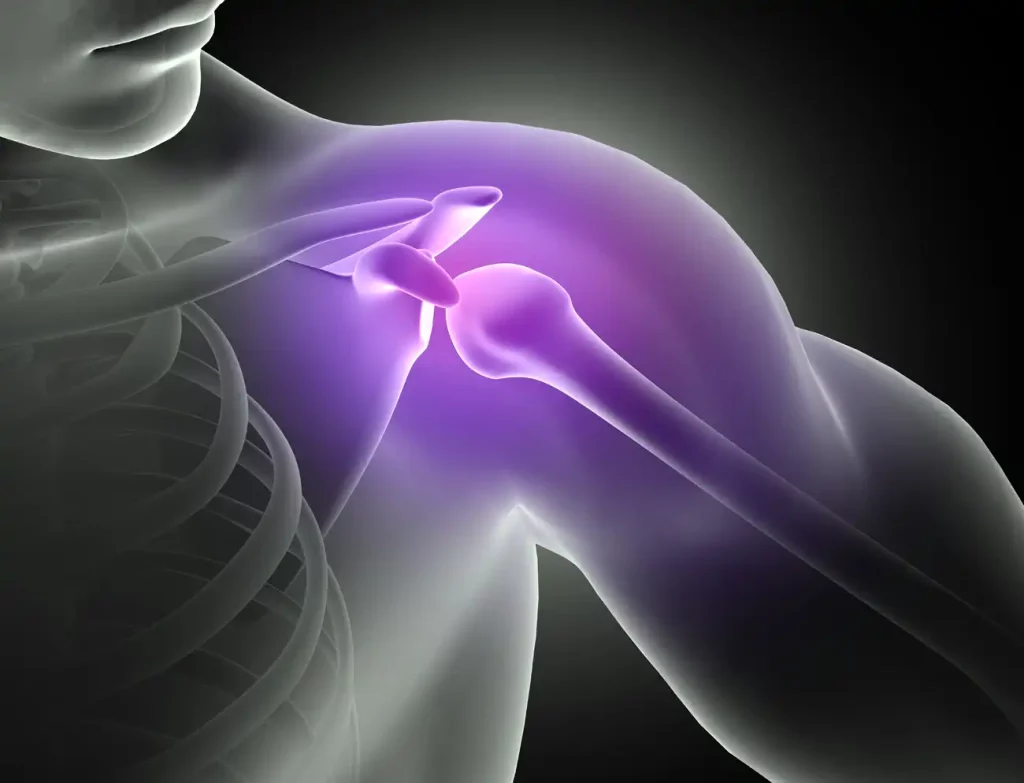You know that nagging feeling, wondering how to relieve shoulder pain from backpack use?
Yeah, me too.
Those heavy loads we lug around can really do a number on our shoulders.
But guess what? There’s hope.
No more cringing every time you sling that bag on.
Let’s step into a world where shoulder pain is no longer a side effect of carrying your backpack!
The Problem: Why Does Your Backpack Cause Shoulder Pain?
Shoulder pain from backpack use is not just about the weight on your back. It also involves how you carry your bag, and even the type of bag you’re using.
The Connection Between Backpack Use and Shoulder Pain
Imagine this: you’re off on a weekend hike, and you’ve got your backpack filled to the brim with essentials. As you journey, your shoulders bear the brunt of the load, causing strain on the muscles and ligaments.

Moreover, the nerves in your shoulder region could be compressed, leading to a condition known as backpack palsy, characterized by weakness, tingling, or numbness in the affected area. This is not just a hiker’s issue, it applies to students, commuters, and travelers as well.
Common Mistakes Leading to Shoulder Pain
Overloading your backpack: We’ve all been there, cramming everything but the kitchen sink into our bags. However, consistently carrying a bag that’s more than 10% of your body weight can cause significant strain on your shoulders, leading to discomfort and potentially long-term issues.

Carrying your backpack on one shoulder: Many of us are guilty of this, especially when in a rush. Unfortunately, this habit can lead to an imbalance in your posture and place unnecessary stress on one side of your body.
Incorrectly adjusted straps: Backpack straps that are too loose can cause the bag to swing and create an unsteady load, leading to extra stress on your shoulders and spine. On the other hand, straps that are too tight can dig into your shoulders, causing pain.
Important guide: How to Loosen Backpack Straps for Maximum Comfort
Initial Pain Relief Strategies
Now that we’ve explored why backpacks can cause shoulder pain, let’s dive into some immediate strategies for relief.
Immediate Steps to Take When Experiencing Shoulder Pain
Shoulder pain can be quite the inconvenience, but there are steps you can take to alleviate it. The first, and perhaps the most straightforward, is to take off your backpack. It may seem obvious, but we often neglect this in our pursuit to push through the pain.
Once the backpack is off, try some gentle stretches to loosen up your muscles. This could include rolling your shoulders, extending your arms, or even some simple neck stretches.
However, be mindful of your body’s reactions. If any movement increases the pain, stop immediately. Persistent or severe shoulder pain should always be checked by a healthcare professional.
The Role of Rest and Ice in Pain Management
As the old adage goes, sometimes you just need to “rest and ice”. This age-old advice remains effective for a reason. After a day of carrying a heavy backpack, allow your body to rest.
If your shoulder pain is recent (acute), apply a cold pack to the area. Cold can help reduce inflammation, thereby relieving pain. Apply it for 15 minutes at a time, making sure to wrap the cold pack in a towel to protect your skin.
Long-Term Solutions to Relieve Shoulder Pain From Backpack Use
Addressing shoulder pain from backpack use is not only about handling immediate discomfort but also about implementing long-term solutions.

The Importance of Proper Backpack Weight
An important step in preventing shoulder pain is being mindful of the weight you’re carrying. As a rule of thumb, your backpack should not exceed 10% of your body weight.
Remember, your health is more important than carrying around unnecessary items. Regularly cleaning out your backpack and only carrying what you need can significantly lighten the load and protect your shoulders.
How to Distribute Weight in Your Backpack Effectively
To prevent shoulder strain, distribute the weight in your backpack evenly. The heaviest items should be in the center, closest to your back. Medium-weight items should surround these, with the lightest items near the front of the bag.
This weight distribution helps keep the load close to your center of gravity, reducing the strain on your shoulders and preventing the backpack from swinging.
Choosing the Right Backpack for Your Body Type
Not all backpacks are created equal. Some are designed with extra padding or wider straps to provide additional support. Others may have a waist strap to help distribute the load more evenly across the body.
Choosing a backpack that fits well, has padded, adjustable straps and a waist belt can help prevent shoulder pain. Furthermore, opt for a bag that’s proportional to your body size, to avoid overpacking and unnecessary strain.
Overall, to relieve shoulder pain from backpack use, evenly distribute weight in the backpack, maintain a good posture while carrying it, adjust straps so the backpack fits closely to your back, switch between shoulders regularly, and consider using a backpack with a waist or chest strap for additional support.
Remember, while these tips can help relieve and prevent shoulder pain from backpack use, if your discomfort persists, make sure to consult with a healthcare professional.
Physical Therapy and Exercises for Shoulder Pain
While lifestyle changes and backpack modifications are vital in relieving shoulder pain, integrating certain exercises into your routine can also be a game-changer.
Beneficial Stretching and Strengthening Exercises
Consistent stretching and strengthening exercises can improve your shoulder health in the long term. Here are some exercises that can help:
- Shoulder Rolls: Stand straight and roll your shoulders in a circular motion, first forwards, then backwards. This simple exercise can help release tension in the shoulder muscles.
- Doorway Stretch: Stand in an open doorway and place your hands at shoulder height on each side of the frame. Slowly lean forward until you feel a gentle stretch in your chest and shoulders.
- Resistance Band Pulls: Hold a resistance band with both hands in front of you, then pull your hands apart, squeezing your shoulder blades together. This exercise can help strengthen your shoulder and upper back muscles, providing more support when you’re carrying a backpack.
Remember to keep movements slow and controlled, and always listen to your body. If something feels uncomfortable, stop.
When to Consider Physical Therapy
If you’re experiencing persistent or severe shoulder pain, it may be beneficial to consult with a physical therapist. They can provide you with a personalized exercise program and monitor your progress, ensuring that you’re performing exercises correctly and safely.
How to Wear a Backpack to Prevent Shoulder Pain
Learning to wear your backpack correctly can play a significant role in preventing shoulder pain.
Adjusting Backpack Straps for Optimal Comfort
Your backpack straps play a crucial role in weight distribution. Ideally, they should be tightened so that the backpack sits closely against your back. If your backpack hangs low, it can pull your shoulders back and strain your muscles and joints. The pack should sit roughly 2 inches above your waist.
Making Use of Chest and Waist Straps
Chest and waist straps are not merely decorative additions to your backpack. They’re designed to help distribute the weight across your body more evenly, taking the load off your shoulders. Fasten these straps and adjust them until you feel a reduction in shoulder strain.
Remember, prevention is the best strategy when it comes to shoulder pain from backpack use. By incorporating these tips and maintaining a conscious approach to how you pack and wear your backpack, you can protect your shoulders and enjoy your daily activities pain-free.
Read more: What Size is a Standard Backpack
Health Tips: Beyond the Backpack
While focusing on the backpack’s impact is essential, let’s broaden our view to other lifestyle factors that can influence shoulder health.
Importance of Posture and Regular Movement
Good posture isn’t only about standing tall; it plays a key role in preventing shoulder and back pain. Whether you’re walking, sitting at your desk, or lounging at home, strive to keep your back straight and shoulders relaxed, not hunched.
Just as vital is regular movement. Long periods of inactivity or staying in one position can lead to muscle stiffness and increased pain. Try to incorporate regular movement breaks into your day – a short walk, a stretch, or just a change of position can do wonders for your overall physical health.
Lifestyle Changes to Support Shoulder Health
Alongside posture and movement, other lifestyle changes can support shoulder health. These include maintaining a healthy weight, staying hydrated, and ensuring a nutrient-rich diet to keep your muscles healthy. Regular exercise that focuses on strength and flexibility can also help prevent shoulder pain.
FAQs about Relieve Shoulder Pain From Backpack
How do you fix shoulder pain from carrying a bag?
How do I get rid of shoulder pain ASAP?
Why does my shoulder hurt after wearing a bag?
Why do my shoulders hurt wearing a backpack?
What is shoulder bag syndrome?
Final Thoughts
Shoulder pain from backpack use is an issue that many people face, particularly students and professionals who can’t avoid carrying around their essentials. However, by understanding why this pain occurs and taking steps to mitigate the causes, it’s possible to greatly reduce, if not eliminate, the problem.
Remember, immediate steps like proper rest, ice therapy, and initial lifestyle changes are crucial to manage the pain. In the long run, investing in a good-quality, body-friendly backpack, maintaining correct posture, adopting regular movement, and leading a healthy lifestyle can go a long way in preventing shoulder discomfort.
Don’t overlook your shoulder pain – prioritizing your health now can save you from chronic issues later on. Making these simple adjustments to your everyday habits will not only ease your pain but also boost your overall well-being.
To know more: What Size Backpack for Travelling to Choose


